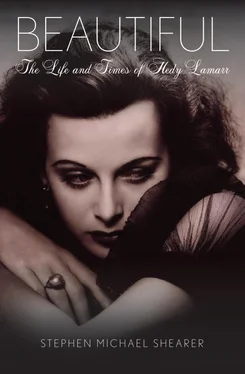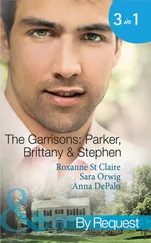1 ...5 6 7 9 10 11 ...144 Meanwhile, Die Koffer des Herrn O.F. opened to glowing reviews on November 25, 1931, and was popularly released on December 5. The film was heralded throughout Europe, capturing the hearts and the imagination of the Depression-era audiences of its day. Delighted with its reception, Hedy later acknowledged, “This time I learned something about light comic acting.” 11
The Kinematograph reviewer wrote, “Alfred Abel…should be singled out. His cute little daughter is Hedy Kiesler, Peter Lorre’s journalist is comical as the script requires, and Harald Paulsen is an amiable, sympathetic architect.” 12Officially premiering in Berlin on January 17, 1932, Die Koffer des Herrn O.F. proved to be a huge success. Reporting for The New York Times that day, the Berlin correspondent, C. Hooper Trask, wrote, “ Die Koffer des Herrn O.F. is a film that nobody should miss who is interested in the screen’s future. There are moments in it where the stylization is successful and points new paths for the screen.” 13The following year, the recently appointed Nazi Party in Germany ordered the picture drastically cut. All political references, specification of production personnel, and most of the songs by Erich Kästner were eliminated from the screen. Even the performances of the Jewish actors were pared down into a much-truncated version of the film, retitled Bauen und Heiraten ( Building and Marriages ). Restored today to its original length of eighty minutes, Die Koffer des Herrn O.F. remains enjoyable to watch. Hedy’s appearance is brief, her voice perhaps a bit too high. But she photographed beautifully. The performances sparkle overall, the images captivate, the message is clear.
As 1932 blossomed, Hedy found herself in a favorable position when Sascha Tobis-Film offered her a starring role opposite one of Germany’s most popular leading men, the thirty-year-old actor Heinz Rühmann. 14The studio’s new production, Mein braucht kein Geld ( His Majesty, King Ballyhoo in the United States), also known as Wir brachen kein Geld ( We Need No Money ), had actually begun shooting on December 31, 1931, while Hedy was still appearing in Private Lives .
Directed by Karl Boese, the brisk story line follows the antics of the Chicagoan Thomas Hoff man (Hans Moser), who tells the residents of a small town he is a millionaire, even though he only has a ten-dollar gold piece in his pocket. 15Also in the film was the immensely popular character actor Kurt Gerron, who in 1928 had introduced the song “Mack the Knife” in the original Kurt Weill–Bertolt Brecht production of Die Dreigroschenoper ( The Three Penny Opera ). 16Completed in less than four weeks, the eighty-seven-minute Mein braucht kein Geld was rushed into theatres to capitalize on the popularity of its two romantic stars. It premiered on February 5, 1932, at the Capital Theatre in Berlin.
Hedy received charming reviews, though her voice still registered a little high, and her lines were perhaps a bit rushed. Mein braucht kein Geld opened in Vienna on March 22, 1932, and premiered in New York on November 15, 1932. The critic for The New York American , Regina Crewe, wrote, “Hedy Kiesler, an easy-to-look-at Viennese player, is decorative as the ingénue.” 17Chiming in with agreement was the critic for The New York Sun : “The acting is typically Germanic, slow and clumsy for this sort of thing—the only bright spot…being the general attractiveness of a new Teutonic miss, Hedy Kiesler.” 18And The New York Times raved: “Excellent work by a cast of familiar German actors, reinforced by Hedy Kiesler, a charming Austrian girl, and fine photography and sound reproduction make the effort thoroughly enjoyable.” 19
After the filming of Mein braucht kein Geld , Hedy went directly into a new play, another comedy, entitled Intimitaten ( Intimacies ). She would later recall of these early days on the stage, “I was imbued with the confidence of youth and a belief that ultimate fame and fortune was just around the corner. And kind, gentle Max Reinhardt was always on my side. I didn’t do too badly in those plays.” 20
Certainly Hedy Kiesler’s star was on the rise. But, in true fashion, she turned her back on her promising future and followed her heart—to Prague, Czechoslovakia, where she had been offered another leading film role. She had also fallen in love again. As George Weller would later tell the writer Jeffrey Donovan in 2000, “She was already fixed up sexually with a very ‘actory’ actor.” 21
Some accounts have concluded that the “actory” actor was twenty-five-year-old Alfred (Fred) Döderlein, who portrayed Alexander in Die Koffer des Herrn O.F., and with whom Hedy had allegedly been briefly engaged. 22But more probably the fellow was the thirty-year-old Englishman Charles Guy Fulke Greville, the 7th Earl of Warwick, 4th Earl Brook, known simply as the sometime-actor Michael Brooke. 23One clue comes from a Picture Play magazine report that stated that, while skiing in Prague with Brooke, Hedy took a bad fall but recovered in time to accept her next film role. 24
“I went [to Prague] because I was in love with somebody,” Hedy told a reporter in 1970. 25There, the new script offered to her contained a mere five pages of dialogue. Filmed the summer of 1932, the production was directed by the noted Czech film director Gustav Machatý. As the female lead, Hedy was paid a total salary of $5,000. The picture was called Extaze, or Ecstasy , as it would be more commonly known. It would define Hedy’s screen image and impact her life to the end of her days.
3

Ecstasy
The respected thirty-two-year-old film director Gustav Machatý wrote the screenplay for Extaze ( Symphonie der Liebe ), as it was titled for German release. Its plot is simple. A young woman, Eva (Hedy), has married Emil Jerman (Zvonimir Rogoz), a wealthy, much older man who is set in his ways. Their wedding night at his luxurious Prague apartment is not consummated, and Emil’s physical disinterest in his young wife leaves her frustrated and heartbroken. She returns to the country estate of her father (Leopold Kramer) to request his help in seeking a divorce. One afternoon, she mounts her horse and rides to a secluded pond, where she impulsively takes a swim au naturel. Her horse runs off with her clothing and catches the eye of a road construction manager, Adam (Aribert Mog), who chases the animal, only to discover the nude Eva cowering in the foliage. Adam is all that Emil is not—young, virile and strong, sensitive and gentle.
Eva pursues Adam to his cottage in the woods one evening. It storms that night, and, confined to his cottage, Eva becomes his lover. Eva learns what true passion and love are about. Emil comes to Eva’s father to plead his cause, but to no avail. Eva confronts her husband.
“What more do you want from me?” Eva asks Emil.
“You,” he replies.
“It’s too late,” she tells him.
While returning by car to Prague, Emil picks up Adam on the road and gives him a ride to the city. Emil soon realizes that Adam is Eva’s lover but says nothing to the younger man as they check into an inn for the evening. Eva comes again to Adam at the inn. Upstairs in his room, Emil commits suicide as the couple, unaware, dance to music below.
Eva knows that her actions are to blame for her husband’s death. As the two lovers wait at a train station, Adam falls asleep, and Eva realizes she must leave him. Adam returns to his job and envisions his lost love, Eva, with a baby.
Читать дальше
Конец ознакомительного отрывка
Купить книгу













